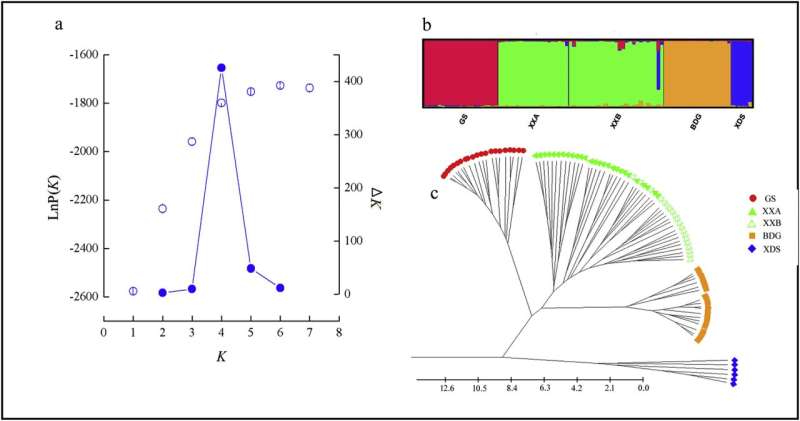Research reveals decreasing genetic connectivity in endangered tree Magnolia patungensis in fragmented forests

Endemic to the mountainous region of East Sichuan, West Hubei and its neighboring areas, Magnolia patungensis Hu is endangered due to overharvesting, habitat degradation and fragmentation. The current endangered status of M. patungensis makes its genetic variation and population connectivity a concern. However, previous studies focused on evaluating the genetic diversity of M. patungensis, the effects of artificial destruction/fragmentation on population connectivity of M. patungensis were not investigated.
A research team consisted of researchers from the Wuhan Botanical Garden and Tibet University employed microsatellite markers to investigate the levels of historical and contemporary gene flows among M. patungensis populations, detect the effect of fragmentation on connectivity, and to make it clear whether inbreeding and genetic bottleneck, which generally associated with habitat fragmentation, have affected the genetic patterns of M. patungensis.
Low genetic variation and high genetic differentiation were observed in the M. patungensis populations, which could be explained by the genetic bottleneck, genetic drift, inbreeding and limited gene flow associated with the small population size and geographic isolation.
Low level of historical gene flow among populations was attributed to the short-distance movements of pollen and seeds and the complex terrains of habitats of M. patungensis. Lower contemporary gene flow indicated that the gene flows were further blocked by dramatic forest fragmentation in recent decades.
According to the results, effective conservation strategies, such as in situ and ex situ conservation plans and artificial pollination within populations, were proposed to be carried out to protect the important genetic resources and relieve endangered status of the tree species.
This study provides more insights into the genetic structure of M. patungensis in the critically fragmented forests, and is beneficial to develop the appropriate restoration strategies for the genetic resource of M. patungensis.
The results have been published in Global Ecology and Conservation, titled "Decreasing genetic connectivity in the endangered tree Magnolia patungensis in fragmented forests."
More information: Xiang-Rong Fan et al. Decreasing genetic connectivity in the endangered tree Magnolia patungensis in fragmented forests, Global Ecology and Conservation (2020). DOI: 10.1016/j.gecco.2020.e01227
Provided by Chinese Academy of Sciences





















